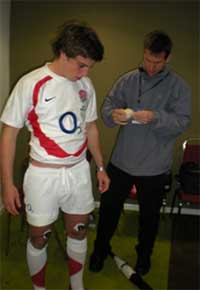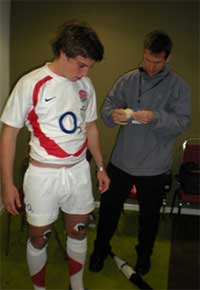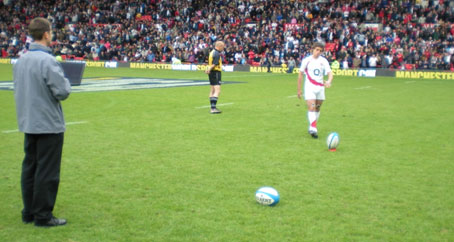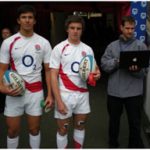FlexComp Infiniti Performs under Pressure
As a psychophysiologist involved in high performance, I am accustomed to using my FlexComp to train athletes to perform under pressure. But in this assignment with a difference, it was my FlexComp that was being asked to perform under pressure. How would it cope?
The Task: At Old Trafford, the home of Manchester United, and in front of a crowd of 40000 people, I was to use my FlexComp to analyse the sEMG of an England Rugby academy kicker executing kicks at half-time of a test match between England and Argentina. The demands included:
Move from packed suitcase to fully wired athlete monitoring 10 sEMG channels in under 20 minutes.
Athlete had never been wired before, was anxious about kicking in front of a large crowd, and had to be given absolute freedom of movement.
Assessment was to be done outdoors, in the wind and possibly rain.
Wireless connection to transmit 10×2048 bits of information per second in a highly crowded electronic space. Old Trafford is full of competing signals
No room for error, and no second chances.
The Performance: The assessment went smoothly. Apart from an initial anxious moment as the anthem singer took longer to vacate the change room than we would have liked, prepping the skin and attaching the electrodes was done in a few minutes. We measured left and right vastus medialus, semitendinosus, glutes, external oblique, and lats. I lost signal when I stayed inside the stadium, but the athlete walked outside to warm up, but connected again once we had line of sight. The athlete kicked 5/6, and reported no inhibition from the monitoring equipment.



- AUTHOR: Dr. Tim Harkness






